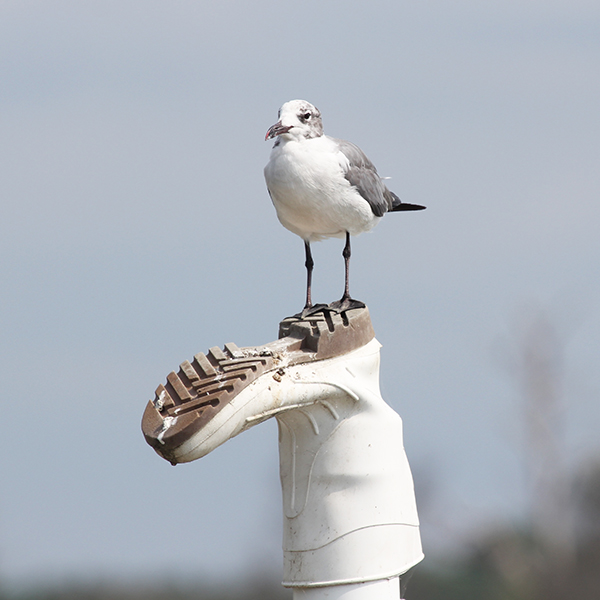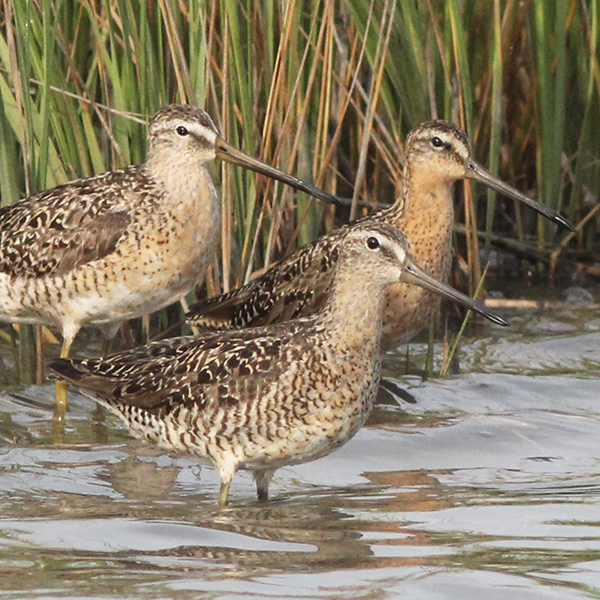QUEEN SOUND LANDING
In Brief: Several pull-outs along the causeway between Wallops and Chincoteague can produce lovely opportunities for photography of common saltmarsh species—shorebirds, Clapper Rail, herons and allies, terns, gulls—as well as a few bonus birds for the list. Recommended for at least a brief stop en route to the Chincoteague National Wildlife Refuge or on the return.
Access: Located on VA-175 in Herntown, VA, 23395. This is a public road with distinct pull-out. Never pull off to the side of the causeway where there are no legal pull-outs, and do not stop or slow down on the causeway, where locals and tourists alike seem to revel in high speeds and short following distances. Drive defensively here.
Additional Info: Virginia DGIF Birding Trail Site
EVERYTHING YOU NEED TO KNOW ABOUT BIRDING QUEEN SOUND LANDING
Queen Sound Landing.
The four-mile causeway that links Chincoteague Island to the Virginia mainland has long been a favorite place for birding, though it is a challenging site, with just few legitimate pull-outs. The first pull-out is about 0.5 miles east of the western end of the causeway, as the road descends from the NASA Wallops Flight Facility (fenced grassy area with many large radio telescopes). This pull-out is on the right (the south) side of the causeway. The second pull-out is at Queen Sound Bridge, about 1.7 miles east of the western end of the causeway. Here you can pull completely off the road, to the right, onto a small spur road with a public boat launch. At about 2.5 miles, there are pull-outs on the north side of the causeway (use caution; only pull into these when driving westward, from Chincoteague village). And finally, at about 3.9 miles, you’ll see a spur bridge on your right, marked as a dead end (this is the former bridge into the village of Chincoteague).
Depending on the tide, large numbers of herons, egrets, ibis, shorebirds, Laughing Gulls, Forster’s Terns, and Boat-tailed Grackles can be seen while making the transit of the causeway, and along the easternmost mile, Black-necked Stilt pairs are commonly observed in the marsh on the north side of the causeway, from April through September. They nest otherwise only at Craney Island in Virginia.
Stopping at Queens Sound Bridge (pull-out is on the west side of the bridge) is always a good idea. At lower tides, the oyster reefs are exposed, attracting American Oystercatchers, which are sometimes hard to find at the refuge during high tides. Watch for Clapper Rails here, often with young in June and July, and the large colony of Laughing Gulls often has young out of the nest from late July onward—drive carefully so as not to hit one. When nor’easters batter the ocean coasts, terns and other birds sometimes seek shelter here, including Common Tern, which usually remains nearer the outer beaches. Shorebirds also take shelter and often roost here at high tide, and over the years, Bar-tailed Godwit has turned up twice (1973, 1991), Long-billed Curlew twice (1988, 1989), and an apparent Elegant Tern was digiscoped in 2004 here. In winter, Brant are often abundant in the marshes and creeks, along with diving ducks such as Bufflehead and Red-breasted Merganser, and rarer birds include Eared Grebe, King and Common Eiders, Harlequin Duck, and Snowy Owl (watch old duck blinds, stakes, and billboards for the owl). In the evening, from October through winter, watch for owls and night-herons to emerge at dusk: look westward for silhouettes of Barn Owl, Short-eared Owl, and Black-crowned Night-Heron. Earlier in autumn, Yellow-crowned Night-Heron is occasionally seen as well.
Black-necked Stilt, Photo: Robert W. Schamerhorn
When near the east end of the causeway, consider taking the right-hand turn onto the old bridge at 3.9 miles. If the tide is low enough, the mudflats here can hold quite a few shorebirds, including Short-billed Dowitcher, Dunlin, Marbled Godwit, Ruddy Turnstone, and Black-bellied Plover.
When at the west end of the causeway, where it ascends to connect with the mainland, watch along the fence at Wallops for flycatchers, as a few Scissor-tailed Flycatchers have been seen in this location. Formerly, it was possible to park here and scope for Upland Sandpipers in July-September, or Snowy Owl and Rough-legged Hawk in winter, but post-2001 regulations prevent these activities at airfields. Keep eyes peeled nonetheless.




